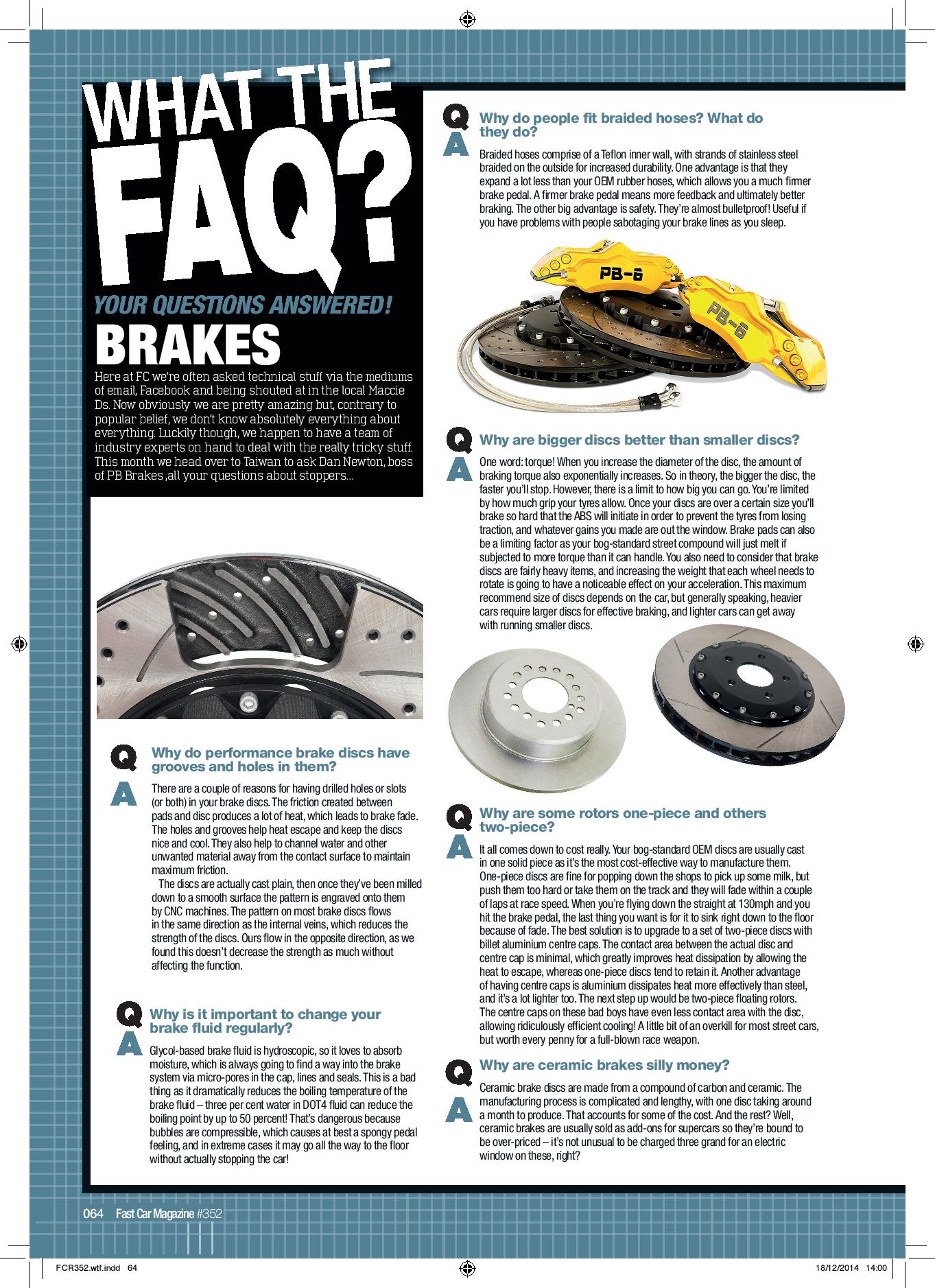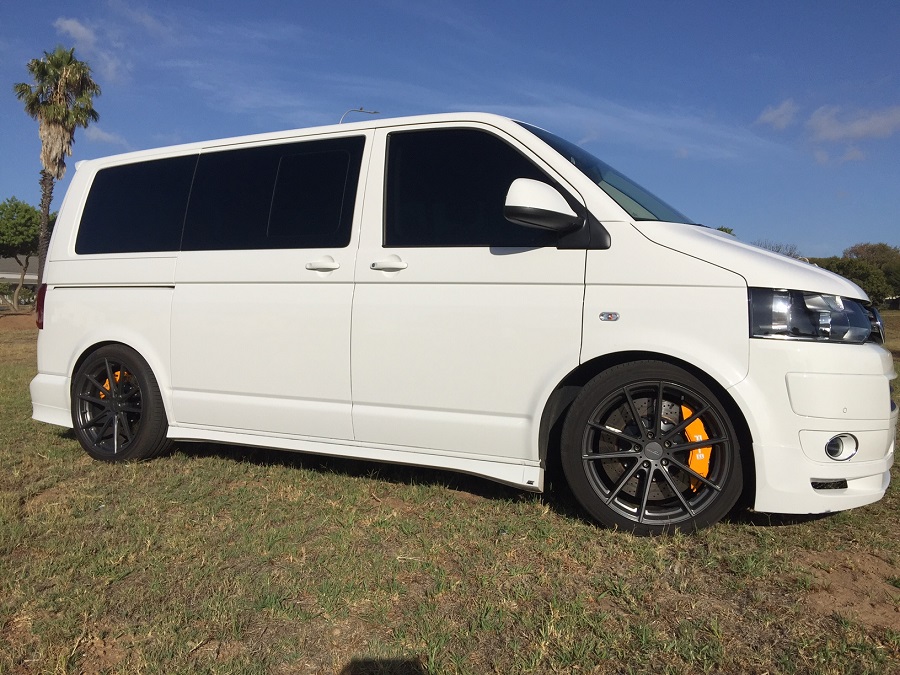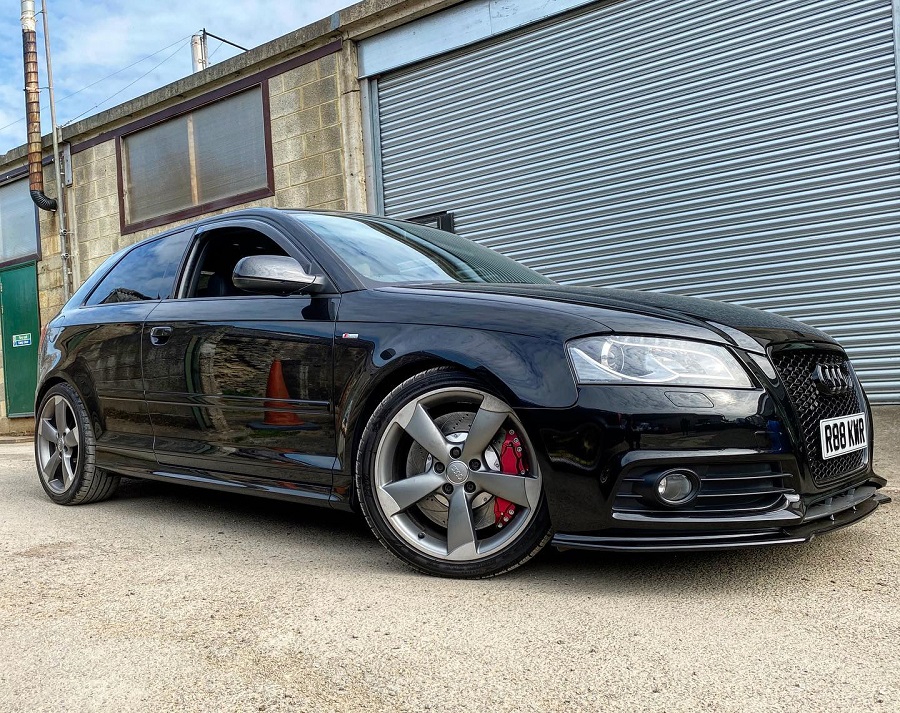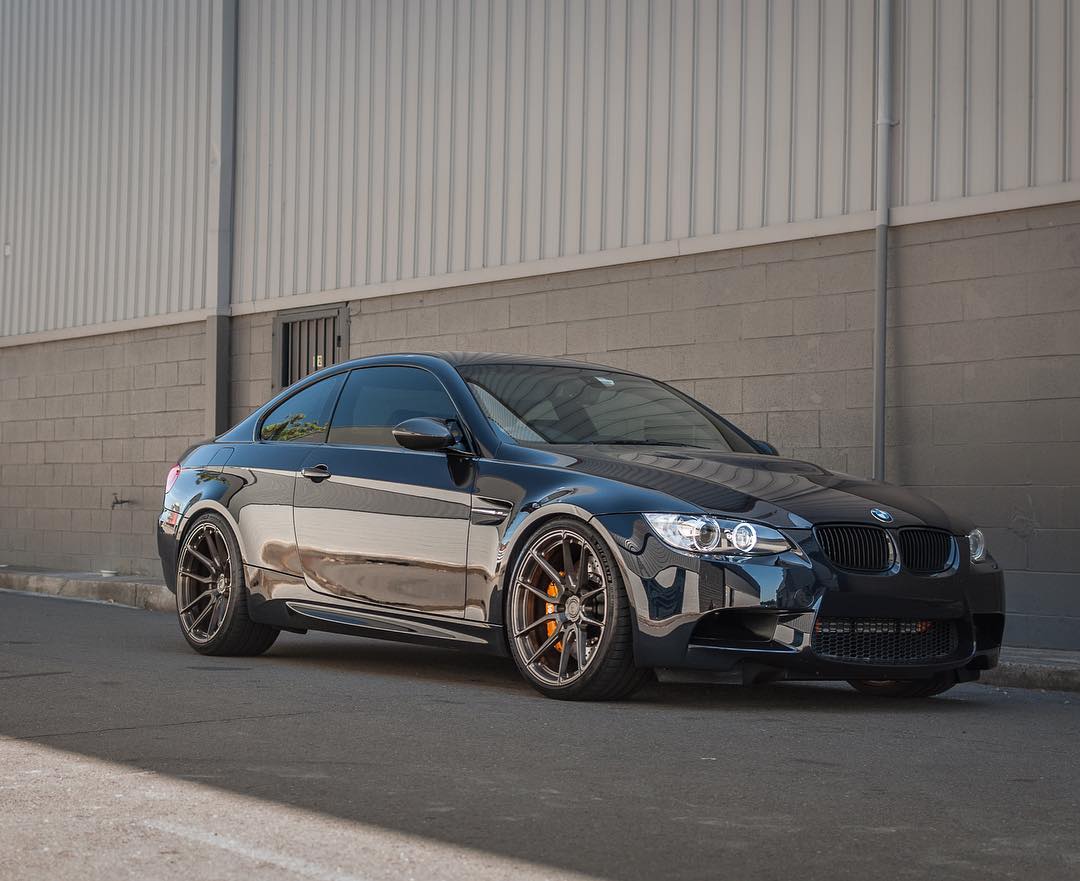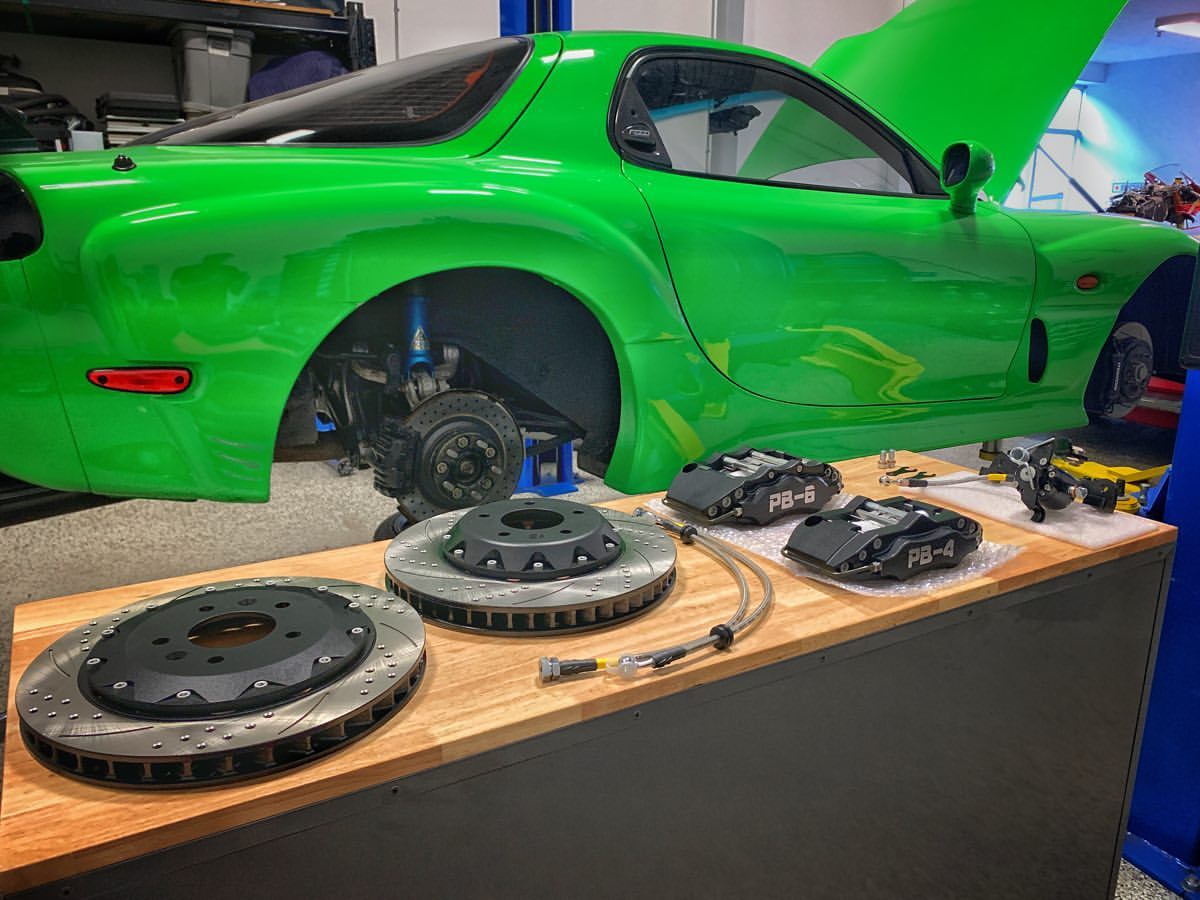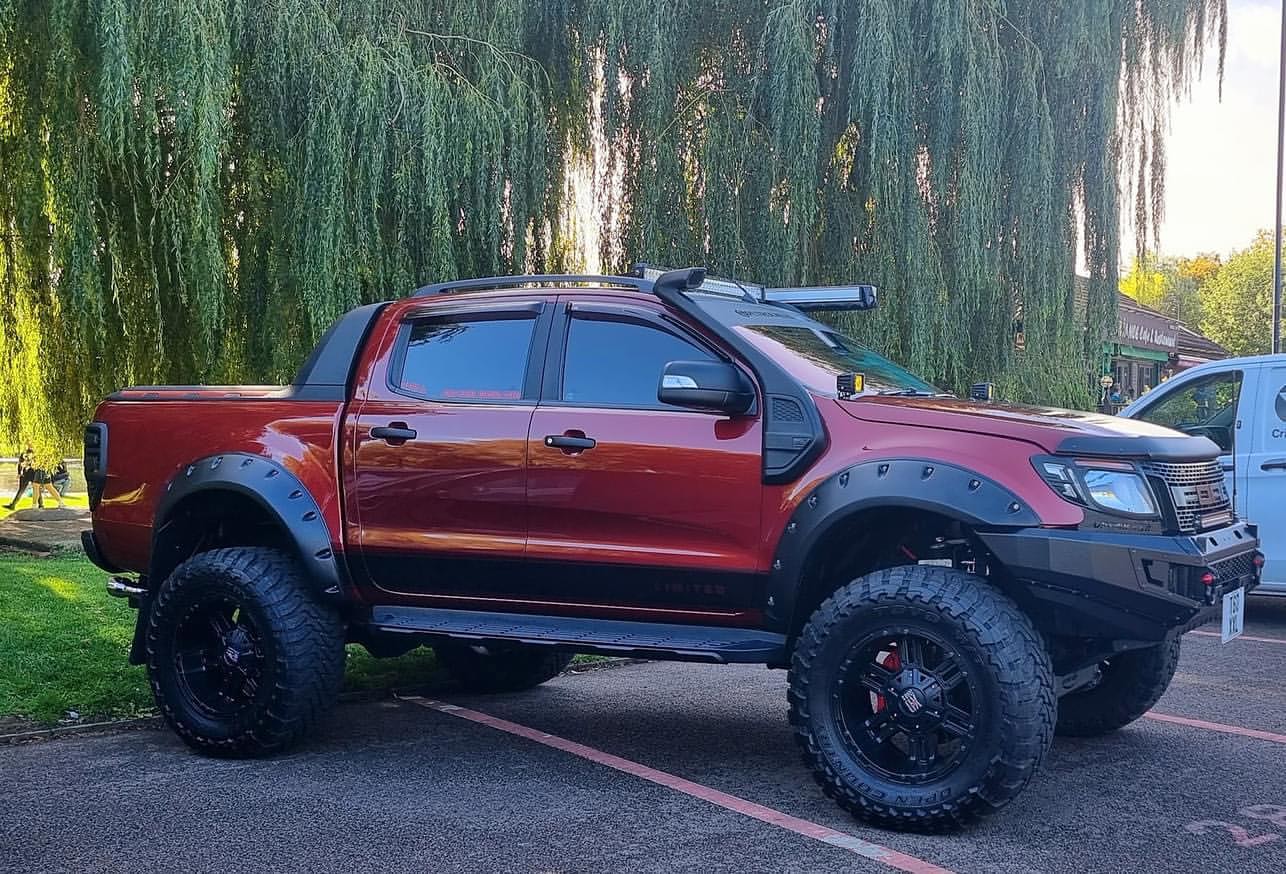
WTFAQ
YOUR QUESTIONS ANSWERED!
BRAKES
Here at FC we're often asked technical stuff via the mediums of email, Facebook and being shouted at in the local Maccie Ds. Now obviously we are pretty amazing but, contrary to popular belief, we don't know absolutely everything about everything. Luckily though, we happen to have a team of industry experts on hand to deal with the really tricky stuff. This month we head over to Taiwan to ask Dan Newton, boss of PB Brakes all your questions about stoppers...
Q. Why do people fit braided hoses? What do they do?
A. Braided hoses comprise of a Teflon inner wall, with strands of stainless steel braided on the outside for increased durability. One advantage is that they expand a lot less than your OEM rubber hoses, which allows you a much firmer brake pedal. A firmer brake pedal means more feedback and ultimately better braking. The other big advantage is safety. They're almost bulletproof! Useful if you have problems with people sabotaging your brake lines as you sleep.
Q. Why are bigger discs better than smaller discs?
A. One word: torque! When you increase the diameter of the disc, the amount of braking torque also exponentially increases. So in theory, the bigger the disc, the faster you'll stop. However, there is a limit to how big you can go. You're limited by how much grip your tyres allow. Once your discs are over a certain size you'll brake so hard that the ABS will initiate in order to prevent the tyres from losing traction, and whatever gains you made are out the window. Brake pads can also be a limiting factor as your bog-standard street compound will just melt if subjected to more torque than it can handle. You also need to consider that brake discs are fairly heavy items, and increasing the weight that each wheel needs to rotate is going to have a noticeable effect on your acceleration. This maximum recommend size of discs depends on the car, but generally speaking, heavier cars require larger discs for effective braking, and lighter cars can get away with running smaller discs.
Q. Why do performance brake discs have grooves and holes in them?
A. There are a couple of reasons for having drilled holes or slots (or both) in your brake discs. The friction created between pads and disc produces a lot of heat, which leads to brake fade. The holes and grooves help heat escape and keep the discs nice and cool. They also help to channel water and other unwanted material away from the contact surface to maintain maximum friction.
The discs are actually cast plain, then once they've been milled down to a smooth surface the pattern is engraved onto them by CNC machines. The pattern on most brake discs flows in the same direction as the internal veins, which reduces the strength of the discs. Ours flow in the opposite direction, as we found this doesn't decrease the strength as much without affecting the function.
Q. Why is it important to change your brake fluid regularly?
A. Glycol-based brake fluid is hydroscopic, so it loves to absorb moisture, which is always going to find a way into the brake system via micro-pores in the cap, lines and seals. This is a bad thing as it dramatically reduces the boiling temperature of the brake fluid — three per cent water in DOT4 fluid can reduce the boiling point by up to 50 percent! That's dangerous because bubbles are compressible, which causes at best a spongy pedal feeling, and in extreme cases it may go all the way to the floor without actually stopping the car!
Q. Why are some rotors one-piece and others two-piece?
A. It all comes down to cost really. Your bog-standard OEM discs are usually cast in one solid piece as it's the most cost-effective way to manufacture them. One-piece discs are fine for popping down the shops to pick up some milk, but push them too hard or take them on the track and they will fade within a couple of laps at race speed. When you're flying down the straight at 130mph and you hit the brake pedal, the last thing you want is for it to sink right down to the floor because of fade. The best solution is to upgrade to a set of two-piece discs with billet aluminium centre caps. The contact area between the actual disc and centre cap is minimal, which greatly improves heat dissipation by allowing the heat to escape, whereas one-piece discs tend to retain it. Another advantage of having centre caps is aluminium dissipates heat more effectively than steel, and it's a lot lighter too. The next step up would be two-piece floating rotors. The centre caps on these bad boys have even less contact area with the disc, allowing ridiculously efficient cooling! A lithe bit of an overkill for most street cars, but worth every penny for a full-blown race weapon.
Q. Why are ceramic brakes silly money?
A. Ceramic brake discs are made from a compound of carbon and ceramic. The manufacturing process is complicated and lengthy, with one disc taking around a month to produce. That accounts for some of the cost. And the rest? Well, ceramic brakes are usually sold as add-ons for supercars so they're bound to be over-priced — it's not unusual to be charged three grand for an electric window on these, right?

Q. What does the DOT mean in brake fluid and what should I look for?
A. DOT is a system created by the Department Of Transport in the US to grade brake fluids based on their boiling points. DOT4 is the one you want to go for as its minimum boiling point is 230°C, more than enough for street applications. DOT5 has a higher boiling point, but it's silicone based, which isn't suitable for most braking systems.
Q. What are brake pads made of?
A. Brake pads can be made from a variety of different materials. Your standard street compound pads are usually a nonmetallic composite of various synthetic materials. They offer great cold bite and very low noise, but the drawbacks are they lack friction and will start to fade at relatively low temperatures. At the other end of the scale you have race compounds, which are either fully metallic or ceramic in composition. They offer much higher levels of friction and are a lot less susceptible to fade, but usually need warming up to optimal temperature in order to work properly. The cold bite is poor, they munch down your discs like there's no tomorrow, can be quite noisy, and you'll be lucky to get 1000 miles out of them. Great on the track, awful on the street. A good middle-ground option is a sport compound pad. Made from semi-metallic materials, the cold bite is good, and the warm bite is even better. You may or may not get a little noise, depending on the application, but it's a small price to pay for big gains in friction and reduced fade.
Q. My BMW has an e-brake, but can I still have a big brake conversion?
A. Up until recently, you couldn't upgrade the rear brakes on a car with an electronic handbrake without losing that function, which wouldn't be street legal. However, we have spent the last couple of years developing a new electronic line-lock system that will retain the OEM handbrake on these cars, and it's finally ready! So far we have adapted the system to work with a few Audi models and the new BMW 5 Series F10, but we're working to increase the available applications all the time. You can order it from our website as part of a rear brake kit.
Q. Why are fixed calipers deemed to be better than floating calipers?
A. As standard, most cars come with floating/slider calipers that have one, or if you're lucky, two pistons in the inner side of the caliper only. So when the hydraulic pressure from the master cylinder forces the piston(s) against the pad, the whole caliper is pulled inward as the pads clamp down on the disc, hence the term floating. One downside of this is the pads on the outer side of the caliper tend to wear unevenly and you end up with something that resembles a door wedge. Another is that since the piston(s) needs to travel so much, the brake pedal can feel spongy and unresponsive. They can also become a bit sticky as they age. On the other hand you have fixed calipers with multiple pistons on either side. Since the pistons are clamping from both sides, the caliper doesn't move and remains fixed in place. This allows for much more even pad wear and a firmer, more responsive pedal feel. But the benefits don't end there. Our PB fixed calipers are all forged from aerospace grade 6061 T6 aluminium, which makes them a hell of a lot harder, stiffer and lighter than their cast-iron counterparts. The monster 8-pot calipers that we include with our 405mm kit take toughness to the next level with their monoblock design.
Q. Why do all cars have bigger brakes on the front than on the back even when they're rear-wheel drive?
A. The reason for that is the front of the car is usually where the oily bit goes, so it's already heavier than the rear without passengers. Then combine that with the fact the weight of the vehicle shifts to the front when you brake, and it means you need more stopping power on the front end to slow the car down effectively. This is why the brake bias on most front-engined cars is around 70 percent front and 30 percent rear.
Q. Can you get uprated drum brakes?
A. Not really. Drum brakes on passenger cars are pretty much obsolete these days, so they aren't really worth upgrading. You're best off with a disc brake conversion kit instead.
Q. What's the biggest brakes I can fit on my car?
A. Well, the only real physical obstruction is the size of your wheel, but there is a sensible size limit for every vehicle. Remember that episode of Top Gear where they spent three grand upgrading the brakes on a Renault Avantime, only to find it made the car's lap times slower? That's because they went too big and the car didn't have enough power to handle the added weight and increased wheel diameter. Had they gone for a smaller kit and retained the same wheel size, the lap times would definitely have shown improvement.
Q. I've been told I need a spot caliper for a rear conversion. What is that?
A. Handbrakes on most vehicles still use brake shoes and drums that are integrated into the rear discs. Upgrading the rear brakes with this system is fairly straightforward, as most conversions also have integrated drums fixed to their rear discs. However, recently more and more cars are moving towards systems where rear OEM calipers double-up as handbrakes. One solution is a spot caliper, which is basically a small single-piston caliper that connects directly to your handbrake cable, and must be used in conjunction with your main rear caliper. There are drawbacks, namely they usually don't come with any form of installation hardware, so you have to make a set of custom mounting brackets yourself. They're also pretty expensive. It wouldn't be unreasonable to expect to pay around £300 for parts and labour. Then once it's installed you now have six calipers to buy replacement pads for, rather than four. Fortunately PB Brakes is here to save the day! We have a much more convenient and cost-effective solution, in the form of our patented line-lock system. This allows our rear calipers to act as handbrakes, much like the OEM parts. The line-lock modules come already attached to our caliper mounting brackets, so they are a direct bolt-on and require no modification. And the best part, they are a fraction of the cost at £100 a set!
Q. What's a hydraulic handbrake?
A. A hydraulic handbrake replaces the conventional cable-operated unit, connects directly to the main brake system, and uses the same hydraulic pressure to clamp the rear calipers. The advantage is that it's a lot more powerful than the standard part. But they are illegal for street use and an automatic MoT failure. That's because handbrakes are sometimes referred to as 'emergency brakes', if your main brakes fail it acts as a back-up device. The law states that the handbrake must be cable operated and fully independent from the main hydraulic brake system. With a hydraulic handbrake, if a brake line rupture causes your brakes to fail, then the emergency brake will fail too and before you know it you've wrapped yourself around a tree. Not ideal!
Q. How do I perform the perfect handbrake turn to impress the ladies?
A. I've often pondered the same question. Ask Ken Block and let me know what he says.
FAQ OFF
What is bleeding brakes and why does it have to be done?
Over time, air will find its way into the brake system, so it needs to be released every couple of years. The problem with having air in the system is, unlike brake fluid, it's compressible. This causes your pedal to become spongy and, if too serious, can lead to complete brake failure. So it's really important to bleed the brake lines before it gets to that stage.


